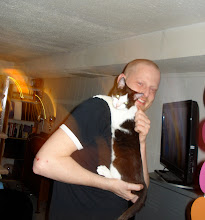Xerox Research Centre Europe (XRCE) is structured into four complementary research areas: content analysis; document structure; image processing; and work practice technology.
At XRCE, the image processing research area specialises in images captured by digital cameras, and continually builds on developments made in capturing images in hostile environments. ‘Hostile’ refers to an environment where poor lighting, shadows, skewed documents, smudges, or any other factor may reduce image quality. In short, this technology makes it possible for a standard digital camera to provide similar results to a dedicated, office-based desktop scanner.
The software is so advanced that it can capture a snapshot of a document taken with glare, reflections and other detrimental factors, but still provide a high quality, optical character recognition (OCR)-enabled document automatically. Technically, this work has produced new methods giving state-of-the-art performance for correcting lighting variations and perspective distortions, for reconstructing and normalising colour camera images, for automatic zoom control, as well as camera optimisations of techniques for text and embedded data decoding.
The technology has been designed to be compatible with shop-standard digital cameras, or even mobile telephones with camera facilities. As such, it has the capability to turn a standard, competitively priced mobile phone into a portable image scanner. Software held on a PC or network enables an image to be downloaded so that all Xerox’s other technologies can be applied e.g. categorisation, classification and storage.
The next step for this avenue of research is enabling the technology to recognise objects as well as text. Recognising objects can enable many associated services for the user. For example, this technology could allow a car rental firm to record and store images of bumps or dents in car bodywork, and identify similar cases when a new one arises. The technology could even be applied to the recording and categorisation of anything animal, vegetable, or mineral, for fast reference and retrieval in the field of science or conservation.
The image processing research at XRCE generates technologies with practical business applications to solve genuine business issues. Individual technologies that have been guided by XRCE from R&D concept to commercialisation - either through a Xerox business group or via a third-party organisation - are:
• Technology: PageCam
• Technology: Portable Document Camera
Separate, individual fact sheets are available on all of these technologies and the business issues they solve (see below).
For more information, please refer to www.xrce.xerox.com or contact...
07 October 2004
Subscribe to:
Post Comments (Atom)
About Me

- Glyn
- Toronto, Ontario, Canada
- PR, internal communications and branding pro currently freelancing as a consultant, writer, DJ, and whatever else comes my way.



No comments:
Post a Comment
Note: Only a member of this blog may post a comment.